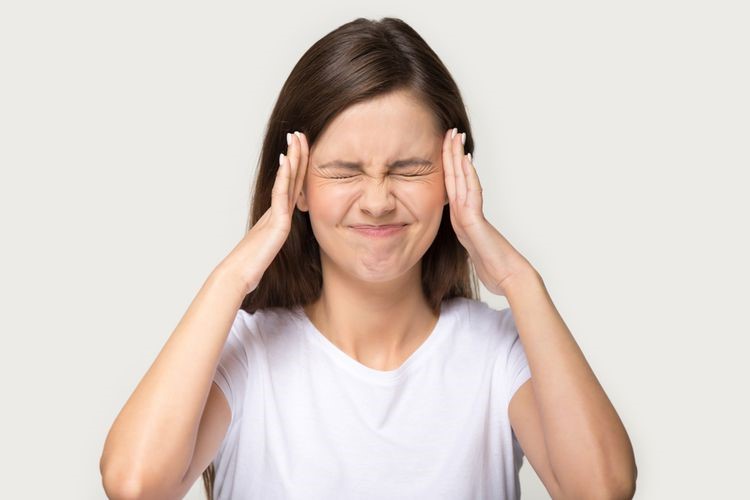
What Part of the Brain Controls Balance
The Brain’s Balancing Act
Balance and coordination are essential functions that allow us to stand upright, walk steadily, and perform various physical activities. What part of the brain controls balance?This intricate process involves multiple regions of the brain working together to integrate sensory information and generate appropriate motor responses.
The Cerebellum: The Master Coordinator
What part of the brain controls balance?The cerebellum, often referred to as the “little brain,” plays a crucial role in maintaining balance and coordinating movements. Located at the base of the skull, this structure receives and processes sensory inputs from various sources, including:
Vision
Information from the eyes about the body’s position and surroundings.
Proprioception
Sensory feedback from muscles, joints, and tendons about body positioning.
Vestibular System
Signals from the inner ear about head and body movements, equilibrium, and spatial orientation.
The cerebellum continuously analyzes this incoming data and makes Split-second adjustments to ensure precise, coordinated movements. It fine-tunes motor control, allowing for smooth, balanced actions.
The Role of the Vestibular System
The vestibular system, housed within the inner ear, is a specialized sensory system that directly contributes to our sense of balance and spatial awareness.
The Semicircular Canals
These fluid-filled, loop-shaped tubes detect rotational head movements and changes in direction.
The Otolith Organs
The utricle and saccule monitor linear movements and the effects of gravity on head position.
Vestibular Nerve Pathways
Sensory information from the inner ear travels through the vestibular nerve to the brainstem and cerebellum for processing.
Even minor disruptions or injuries to the vestibular system can result in dizziness, vertigo, and impaired balance.
The Brainstem’s Balancing Act
What part of the brain controls balance?The brainstem acts as a relay station, transmitting balance-related signals between the cerebellum, vestibular system, and other brain regions involved in movement and posture.
The Vestibular Nuclei
These clusters of neurons within the brainstem receive and integrate vestibular information from the inner ear.
The Reticular Formation
This network of neurons in the brainstem plays a role in maintaining muscle tone and posture.
The Brainstem’s Connection
It transmits balance data from the vestibular system to the cerebellum and relays corrective motor signals from the cerebellum to the spinal cord.
Damage or lesions in the brainstem can severely impair balance, coordination, and postural control.
The Cerebral Cortex’s Contribution
While the cerebellum and brainstem are the primary coordinators of balance, the cerebral cortex also plays a supporting role in this complex process.
The Parietal Lobe
This region of the cerebral cortex integrates sensory information from various sources, including vision, touch, and proprioception, to create a spatial awareness of the body.
The Motor Cortex
Located in the frontal lobe, the motor cortex generates commands for voluntary movements, working in tandem with the cerebellum for coordinated actions.
The Visual Cortex
Processing visual information from the eyes contributes to our sense of balance and spatial orientation within our surroundings.
Injuries or disorders affecting these cortical regions can lead to impaired balance, spatial neglect, or difficulties with movement planning and coordination.
The Basal Ganglia’s Role
The basal ganglia, a group of subcortical nuclei, are primarily associated with motor control and movement initiation. However, they also contribute to balance and posture regulation.
The Striatum
This largest component of the basal ganglia receives input from various brain regions, including those involved in balance and movement.
The Substantia Nigra
This midbrain structure plays a role in maintaining muscle tone and posture through its connections to the cerebellum and brainstem.
Disorders affecting the basal ganglia, such as Parkinson’s disease, can lead to balance impairments and postural instability.

Other Contributing Factors
While the brain’s structures play a central role in balance and coordination, other factors also influence this complex process:
Sensory Integration
The ability to accurately interpret and combine information from multiple sensory systems (vision, proprioception, vestibular) is crucial for maintaining balance.
Muscle Strength and Tone
Adequate muscle strength, flexibility, and tone in the core, legs, and extremities support proper posture and balance.
Aging and Neurological Disorders
Age-related changes, injuries, or conditions like stroke, multiple sclerosis, or peripheral neuropathy can impair balance and increase fall risks.
Environmental Factors
Uneven surfaces, poor lighting, obstacles, or unstable footwear can challenge our balance and coordination abilities.
Regular exercise, physical therapy, and adaptive aids (canes, walkers) can help improve or compensate for balance deficits caused by neurological or age-related factors.

The Balancing Brain
Balance and coordination are complex processes that involve the intricate interplay of multiple brain regions, sensory systems, and pathways. The cerebellum, vestibular system, brainstem, cerebral cortex, and basal ganglia all contribute to this delicate balancing act.
Understanding the neurological underpinnings of balance can help in the diagnosis and management of balance disorders, falls prevention, and the development of targeted therapies for conditions affecting this vital function.
Maintaining a healthy brain and engaging in activities that challenge our balance can help preserve and enhance our ability to navigate the world with poise and stability.
In conclusion, the cerebellum plays a crucial role in controlling balance and coordination. Located at the back of the brain, the cerebellum receives sensory information from the inner ear, muscles, and joints, allowing it to coordinate muscle movements and maintain equilibrium. Damage or dysfunction in the cerebellum can lead to balance problems, dizziness, and unsteadiness.
Understanding the importance of the cerebellum in balance control is essential for addressing issues related to vertigo, ataxia, and other balance disorders. Additionally, the brainstem, particularly the vestibular nuclei, also contributes to the integration of sensory information and plays a role in controlling balance. Together, these brain structures work in harmony to ensure smooth and coordinated movement, posture, and stability.
By recognizing the intricate neurological mechanisms involved in balance control, healthcare professionals can develop targeted interventions and treatments to help individuals with balance-related conditions.
Moreover, advancing research in the field of neurology and neuroscience is crucial for enhancing our understanding of the brain’s role in maintaining balance and developing innovative therapies for balance disorders. With continued exploration and knowledge, we can strive to improve the quality of life for individuals affected by balance-related challenges and pave the way for innovative interventions that harness the brain’s remarkable capabilities for maintaining equilibrium.



